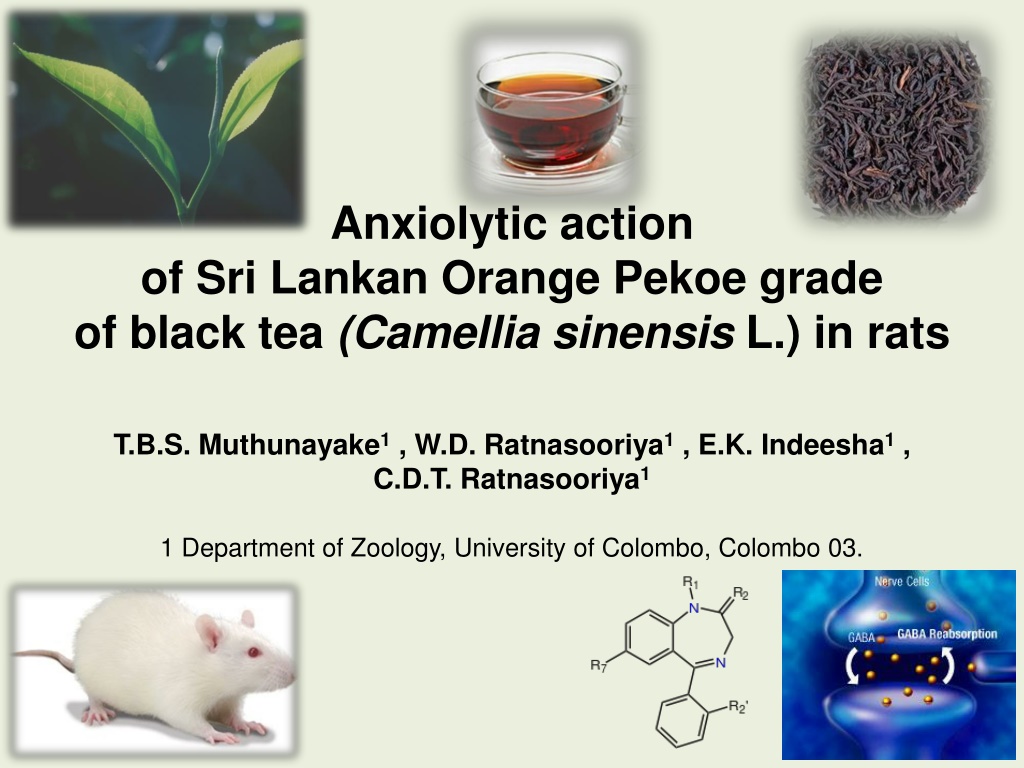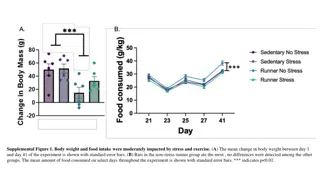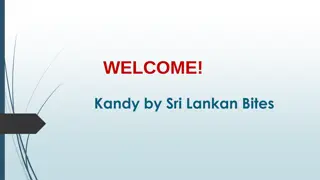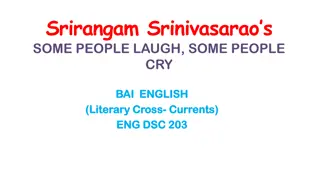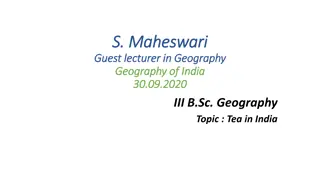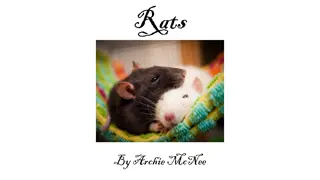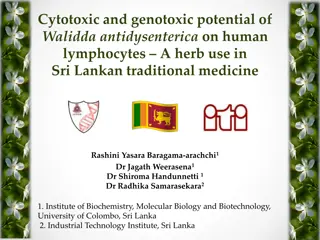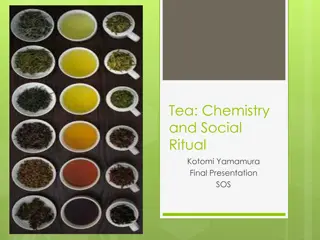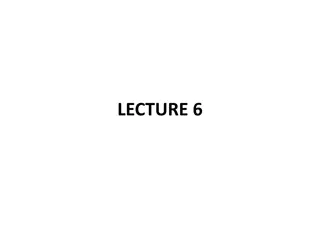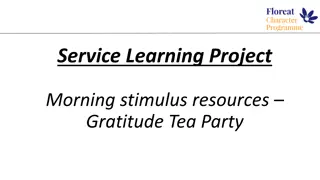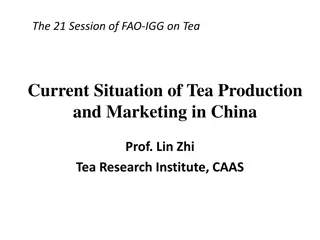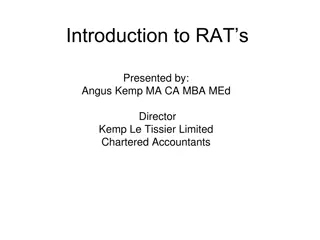Anxiolytic Action of Sri Lankan Orange Pekoe Black Tea in Rats
Tea, particularly black tea, is a widely consumed beverage globally. This study explores the potential anxiolytic effects of Sri Lankan Orange Pekoe grade black tea made from Camellia sinensis in rats. Anxiety is a prevalent emotional state affecting a significant portion of the population, and there is growing interest in natural remedies like dietary supplements to manage stress and anxiety. The research aims to investigate the anxiolytic properties of different grades of black tea, focusing on the lesser explored whole leaf grade. By understanding the potential benefits of black tea on anxiety, it may provide insights into new natural remedies for daily stress relief.
Download Presentation

Please find below an Image/Link to download the presentation.
The content on the website is provided AS IS for your information and personal use only. It may not be sold, licensed, or shared on other websites without obtaining consent from the author. Download presentation by click this link. If you encounter any issues during the download, it is possible that the publisher has removed the file from their server.
E N D
Presentation Transcript
Anxiolytic action of Sri Lankan Orange Pekoe grade of black tea (Camellia sinensis L.) in rats T.B.S. Muthunayake1 , W.D. Ratnasooriya1 , E.K. Indeesha1 , C.D.T. Ratnasooriya1 1 Department of Zoology, University of Colombo, Colombo 03.
INTRODUCTION Tea is manufactured from top most immature leaves and buds of Camellia sinensis (L) O. Kuntz (Family: Theaceae) Besides water, Tea is the most consumed beverage in the world. It is estimated that globally 3.5 million cups, glasses or bowls of tea are consumed daily at present Its per capita consumption is 2.52 3.1 kg/person/annum Sri Lankan daily consumption of tea is about 3.5 cups. It is accounting a per capita consumption of 1.38 kg/person/annum
Introduction to Tea cntd Based on the manufacturing technique; 3 main types of tea: 1. Black (fully aerated or fermented) 2. Green (unaerated or unfermented) 3. Oolong (semi aerated or semi fermented) Black tea accounts 78% of world s tea production and about 80% of global tea consumption Sri Lanka is the 2nd main exporter of black tea in the world and is drunk in more than 138 countries.
Classification of black tea Broken grade (different size tea particles) Whole leaf grade (twisted but, not broken) Eg: Orange Pekoe Broken leaf grade Eg: Broken Orange PekoeFannings Dust grade Eg: Dust No. 1 grade Eg: BOPF
Anxiety Anxiety is an emotional state, unpleasant in nature and is associated with uneasiness, discomfort and concern or fear about some defined or undefined future threat Currently, anxiety affects one eighth of the worldwide population It is estimated that, up to 40% of individuals would experience an anxiety disorder in their life There is a greater deal of popular and medicinal interest in the use of dietary supplements in order to manage normal every day stress and anxiety
Sri Lankan Black tea and anxiolytic property Some reputed Sri Lankan traditional practitioners and herbalists claim that consumption of 3-5 cups of warm black tea help to relieve day to day anxiety. However, the grade of the black tea is not specified. Dust grade No. 1 black tea (belongs to broken grade) has shown to possess anxiolytic activity. But, it is known that bioactivity of black tea depends on particle size and agroclimatic elevation among other things. As yet, the anxiolytic potential of whole leaf grade black tea is not scientifically tested
Aim of the study To investigate the anxiolytic action of Sri Lankan low grown orthodox whole leaf grade black tea (Camellia sinensis (L) O. Kuntz ; Family: Theaceae) using Orange Pekoe (O.P.) grade tea.
METHODOLOGY Preparation of black tea brew (BTB): Garden fresh Orange Pekoe (O.P.) grade black tea sample was collected from St. Jochims tea estate of the Tea Research Institute, Hedallana, Ratnapura, Sri Lanka (29 m above mean sea level: low grown) 2g of O.P. grade Black tea + 100 ml of boiling water (ISO 3103) Brewed for 5 min 36.1 % w/v tea solids Based on this, human equivalent doses for rats were prepared as follows: 1.5 cups (223 mg/kg) Brewed for 5 min + 3 cups (446 mg/kg) 10 g of O.P. grade black tea 30 ml of boiling water 9 cups (1339 mg/kg) dose in 3 ml 9 cups (1339 mg/kg)
Evaluation of anxiolytic activity of O.P. grade black tea Tested in rats using three models of anxiety; 1. Rat hole-board Monitored parameters; (Observation time - 7.5 min) Number of rears Locomotary activity in terms of number of crossings Number of head dips Total dipping time All rats used to determine the anxiolytic activity in the rat hole- board test were closely observed for 2-3 h for any overt signs of toxicity
2. Neophobic suppression of eating test Increased intake of novel food (dry fish) in an unfamiliar environment is considered as a measure of anxiolytic activity. (observation time : 30 min) 3. Neophobic suppression of drinking test Increased intake of novel drink (diluted sweetened condensed milk) in an unfamiliar environment is considered as a measure of anxiolytic activity. (observation time : 2 h) In each of above tests, anxiolytic effects were determined 1h after oral administration of O.P. tea or control (3 ml of water) / (N = 6 10 / group) After oral administration, rats were kept in their original cages
Evaluation of the GABAergic activity using the elevated plus maze model Rats were randomly divided in to 2 groups & orally administered as follows Group : 1 Group : 2 3 ml of BTB Control (3 ml water) N = 8 (446 mg/kg dose ) / N = 8 1h post treatment rats were individually placed in the neutral zone facing to an open arm of a wooden elevated plus maze model and observed for 5 min
Monitored parameters in elevated plus maze model: Number of entries to open arms Time spent in open arms Number of entries to closed arms Time spent in closed arms Neutral zone Number of entries to the neutral zone Time spent in the neutral zone Closed arm Open arm
Calculated indices: number of entries to open arms + number of entries to closed arms Total number of entries = number of open arm entries 100 total number of entries % open arm entries = % time spent in open arms = time spent in open arms 100 total time spent in open arms and closed arms
Evaluation of muscle strength and motor coordination Rats were randomly divided in to 2 groups & orally administered as follows Group : 1 Group : 2 3 ml of BTB Control (3 ml water) N = 9 (446 mg/kg dose) / N = 9 1h post treatment rats were subjected to; Bar holding test (Plaznik, 1993) Bridge test (Plaznik, 1993) Righting reflex test (Martin, 1993)
Statistical analysis The results are expressed as means SEM (Standard Error of Mean). Statistical comparisons were made using Mann-Whitney U test (Bluman, 1998) using Minitab 14.0 statistical package. Significant level was set at P < 0.05.
RESULTS Anxiolytic activity in Rat hole-board test: Effect of O.P tea on locomotory activity Effect of O.P tea on no. of rears * * 40 40 * * * 35 35 No. of crossings 30 30 25 25 No. of rears 20 20 15 15 10 10 5 5 0 0 Control 1.5 cups 3 cups 9 cups Control 1.5 cups 3 cups 9 cups Treatment Treatment * O.P tea significantly (P<0.05) increased the number of crossings (low dose by 43%, mid dose by 54% and high dose by 50% ) Mid dose (by 58%) and high dose (by 58%) of O.P tea significantly (P < 0.05) increased the number of rears These two effects were dose dependent; r2 = 1.0, P < 0.05
Results of rat hole-board test cntd. Effect of O.P tea on total dipping time * O.P tea significantly (P < 0.05) increased the total dipping time (low dose by 123%, mid dose by 65% and high dose by 114%) 18 16 * Total dipping time * 14 12 * 10 8 This effect was dose dependent; r2 = 1.0, P < 0.05 6 4 2 0 Effect of O.P tea on no. of head dips Control 1.5 cups 3 cups 9 cups Treatment 12 No. of head dips 10 All the test doses moderately increased the number of head dips (low dose by 49%, mid dose by 31% and high dose by 33%) 8 6 4 2 0 Control 1.5 cups Treatment 3 cups 9 cups Rats tested in hole-board did not show any overt signs of toxicity during the observed time period
Effect of O.P. tea on food intake in a novel environment: Treatment Food intake (g) 0.41 0.046 Control (water/ N = 6) 0.516 0.017 1.5 cups (223 mg/kg; N = 6) 0.784 0.069 * 3 cups (446 mg/kg ; N = 6) 0.474 0.026 9 cups (1339 mg/kg ; N = 6) As shown in the Table , all three doses of BTB of O.P. grade black tea dose dependently (r2 = 1) increased the food intake (low dose by 25%, mid dose by 91% and high dose by 16%). However, the effect was significant (P < 0.05) only with the mid dose.
Effect of O.P. tea on milk intake in a novel environment: Treatment Milk intake (g) 15.33 2.76 Control (water/ N = 6) 20.78 0.99 1.5 cups (223 mg/kg; N = 6) 25.5 1.4 * 3 cups (446 mg/kg ; N = 6) 19.17 1.89 9 cups (1339 mg/kg ; N = 6) As shown in the Table, all three doses of BTB of O.P. grade black tea dose dependently (r2 = 1) increased the milk intake (low dose by 35%, mid dose by 66% and high dose by 25%). Like with food intake, significant (P < 0.05) increase in the milk intake was evident only with the mid dose
Effect of O.P. grade black tea on activity in elevated plus maze model The mid dose of BTB of O.P. grade black tea markedly and significantly (P < 0.05) increased * * * 3 cups Treatment Treatment 3 cups Control Control 0 1 2 3 4 5 6 0 20 40 60 80 Time spent in open arms the time spent in open arms (by 129%) No. of entries to open arms the number of entries to open arms (by 111%) * 3 cups Treatment % open arm entries (by 51%) Control 0 10 % open arm entries 20 30 40 50
* 3 cups Treatment % time spent in the open arms (by 94%) Control 0 5 10 15 20 25 30 35 40 % time spent in open arms * 3 cups Treatment Control 0 2 4 6 8 10 12 14 No. of entries to neutral zone
Mid dose of O.P. grade tea significantly (P< 0.05) decreased the time spent in closed arms (by 27%) * * 3 cups Treatment Control 0 50 100 150 200 250 300 Time spent in closed arms Time spent in the neutral zone and number of entries to closed arms was not significantly (P > 0.05) altered
Effect of O.P. tea on muscle strength and motor coordination Mid dose of BTB of O.P. grade black tea did not significantly (P > 0.05) affect on muscle strength and motor coordination 50 30 Holding latancy of Latency in Bridge test 25 40 bar (sec) 20 30 15 (sec) 20 10 10 5 0 0 Control 3 cups Control 3 cups Treatment Treatment 1.2 Rithing reflex latency (sec) 1 0.8 0.6 0.4 0.2 0 Control 3 cups Treatment
DISCUSSION The results show, for the first time, that BTB of Sri Lankan low grown orthodox O.P. grade black tea possesses marked anxiolytic activity with no any observable side effects It is almost comparable to Dust grade No.1 black tea This BTB induced anxiolytic activity had a quick onset (within 1h) indicating that the action is mediated via a phytoconstituent/s already present in the BTB Since the anxiolytic activity of O.P. tea was dose-dependent, it indicates that the effect is genuine, specific and possibly receptor mediated. Also, this study scientifically justify the claims made by some Sri Lankan traditional practitioners that black tea has anxiolytic potentials.
GABAergic activity of O.P. grade black tea The elevated plus maze model is based on rodents' natural aversion to open spaces. Therefore, they typically avoid the open arms of the maze and spend most of their time in the two enclosed arms. Anxiety reduction in the plus-maze is indicated by; an increase in the open arm entries, time spent in the open arms, % open arm entries and reduction in the time spent in closed arms compared to the control and it is related with GABAergic mechanism. It is well recognized that GABA pathways play a critical role in the etiology of and treatment of anxiety Low levels of GABA in the brain are associated with anxiety
Increasing of the above mentioned parameters in elevated plus maze model indicates GABAergic action of O.P. grade tea in this study. L-theanine passes the blood-brain barrier and has been shown to potentiate the release of GABA on GABAergic synapses and increases GABA level in rat brains. Flavanoids (such as flevanols, theaflavins and thearubigins that are rich in tea) are shown to bind to GABAa receptors and this mechanism may also play a role in modifying the GABA signaling pathway to induce an anxiolytic action in this study.
L - theanine Increase brain dopamine level Increase serotonin production in brain (29). Possibly serotoninergic mediated action of O.P. tea Possibly dopaminergic mediated action of O.P. tea
CONCLUSION This study demonstrate, for the first time, that BTB made from Sri Lankan low grown orthodox O.P. grade black tea has fast acting oral anxiolytic activity with no observable side effects. Anxiolytic activity is possibly mediated via GABAergic, serotoninergic and dopaminergic mechanisms. As claimed in Sri Lankan traditional medicine, regular consumption of at least 3 cups of black tea may be a useful strategy to alleviate day to day anxiety resulting from present day stressful lifestyles.
ACKNOWLEDGEMENT This study received financial support from the National Science Foundation of Sri Lanka under the grant number NSF/Fellow/2011/01.
REFERENCES Modder WWD, Amarakoon AMT, Tea and Health, Tea Research Institute, Talawakelle, Sri Lanka, 2002. Anonymous, Inter Governmental Group (IGG) on tea, Proceedings of the 20th Session of IGG, 31st January 2nd February, 2012, Colombo, Sri Lanka. Ratnasooriya WD, Fernando TSP, Ranatunge RAAR, Anxiolytic activity of hot water brew of Sri Lankan black tea (Camellia sinensis L.) in rats, Australian Journal of Medical Herbalism, 2007, 19, 178 184. Wickramasinghe RL, Tea. In: Advances in Food Research, 24, Chichester, Mark C.O. and E.M. Stewart (Eds). Academic Press, New York, 1978, 229 286. Wickramanayake, TW, Food and Nutrition. Hector Kobbekaduwa Agrarian Research and Training Institute, Colombo, Sri Lanka, 1996, 202 206. Poschel BPH, A simple and specific screen for benzodiazepene like drugs, Psychopharmacology, 1971, 62, 117 121
Maribel R, Rube R, Alejandro Z, Jaime T, Enrique J, Flavanoids from Tilia americana with anxiolytic activity in plus maze test, Journal of Ethnopharmacology, 2008, 118, 312 317. Anonymous, Tea preparation of liquor for use in sensory tests: ISO 3103: 1532, International Organization for Standardization, Geneva, Switzerland, 1980.hypnotics, European Journal of Pharmacology, 1990, 182, 487 489. File SS, Wardrill A, Validity of head dipping as a measure of exploration in modified hole-board, Psychopharmacology, 1975, 44, 53 - 57. Perrault G, Moreh E, Sanger DJ, Zivkovic B, Differences in Pharmacological profile of new generation of benzodiazepenes and non- benzodiazepene Bluman AG, Elementary Statistics. 3rd Ed, Addison Wesley Longman, Califonia, USA, 1998, 599-623. Nemeroff CB, The role of GABA in the Pathophysiology and treatment of anxiety disorders, Psychopharmacology Bulletin, 2003, 37, 133 146.
